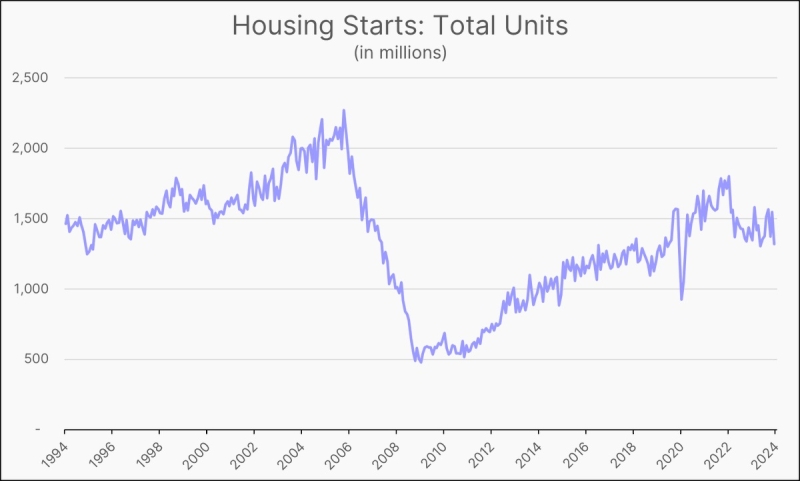Advertisement
Inlanta Mortgage announces expansion into Indiana, Missouri and North Dakota
Secrets to building a successful construction lending practiceMark Anthony McCrayconstruction lending, mortgage brokers, marketing, Appraisal Institute, development loan
I was reading an industry magazine the other day and came across
something very funny, a little shocking, too. A very popular
mortgage lending resource aggressively advised Mortgage Brokers to
stay away from construction loans. Unbelievable! Their argument was
that you will spend too much time for nothingthat they arent
closable. This was funny because I never turn away construction
loans. They represent a solid 25 to 30 percent of my business.
Frankly, if I were going to only do one kind of loan, it would
easily be construction and development loans!
Why? Keep reading.
Three reasons to broker construction
loans
While real estate investors, small business owners and other types
of borrowers would like to close their commercial loans, builders
and developers must close their loans. That's how they make their
living, which makes it a good way for you to make your living. As
opposed to a good way to earn some income and build long-term
wealth, builders and contractors need construction activity to put
food on their table. Even in this market, construction activity is
continuing in most markets; it has shifted to commercial projects
and multi-family, and away from single-family residential
properties. You can be the key to helping them feed their families.
Thats where you can profit.
Also, in my experience, most builders are experienced enough as
borrowers, so they wont require a lot of "training" from the
broker. True, many are not accustomed to working with brokers to
raise money for their projects. However, they are experienced in
regard to helping you compile everything you'll need on your
lender's loan checklist. On the other hand, a lot of commercial
borrowers require a lot of timeturning the broker into a teacher,
as wellbecause they have only previously been exposed to borrowing
for their home loan. I have never had a builder ask me what a
Member of the Appraisal Institute appraisal is, why they need one
or why they cost more. That means that my job is often just a
matter of packaging the loan request well and locating a money
source. This is much more time-efficient than educating a borrower
along the way.
Finally, closing construction loans for small- to mid-sized
commercial projects has another benefit: You often get the first
opportunity to close the permanent mortgage! There are two
approaches to this step. One, you can hope to have earned your shot
by having been successful at closing the very difficult
construction or development loan. Or, you can ask for a fee
agreement that covers both phases of the project at the beginning,
if you're confident that you can bring the entire financing package
together. For me, this is one of the most exciting aspects of
working on commercial loans.
So, have I convinced you that construction lending makes sense?
Good! What's next?
Where do you start?
To be fair, most brokers can protect their reputations by staying
away from construction loans. After all, they can be tricky, and
there's no reason to ruin your business and someone else's by
performing what I call "lending malpractice." However, if you're
going to do construction loan brokering, you will want to know the
answers to these three questions:
1. Where can you find the better clients?
2. How can you quickly determine whether or not you have a good
deal?
3. How can you package a construction loan request so that lenders
will respond?
In this article, I will address each of those questions in a way
that, I hope, will give you tools that you can use to be more
successful as a mortgage professional.
Now, let's tackle the burning questions.
Where are the better clients?
I have found the best builder contacts through three primary
sources:
Local builders associations
You can offer to present a seminar to the local builders
association. I have done this for builders and for other brokers.
As a general rule, you may not get hundreds of people to attend,
but those who do will have a deal to discuss with youusually right
after your presentation! Therefore, take someone to help you, or be
prepared to spend more time talking after your presentation than
during your presentation.
Local community banks
Contact a local banker and ask for "turn-downs" that don't fit
their programs. In this market, bankers are friendlier about asking
for help with loans that are in their pipelines. As Woody Allen
said, 90 percent of the success here is in the showing up. Taking a
business card or two to your bank can work wonders.
Project signs
Place a call wherever you see a sign for a project that is "Coming
Soon," but where construction won't be starting for some time. Most
of the time, these developers haven't secured their financing, so
they haven't been able to begin construction. The project has
languished, and they're frustrated. Be prepared to prove your
determination. After all, they have probably dealt with a lot of
disappointment by the time you call. If you can demonstrate some
energy, you may be able to win an exciting engagement.
All three approaches will yield fruit for you and teach you
something unique about the business. Remember, you don't need a lot
of deals to get your feet wet. You just need two or three in your
pipeline on which you can focus and learn your way around these
types of loans. It only takes a couple for you to begin to
understand what factors make a deal strong. In the mean time, let's
look at a few keys to protecting your time and increasing your
chances of success by being able to determine whether you have a
loan that can be closed.
Is it a good deal?
Construction money is tighter than ever before. Loans are still
being made, but with the competition for the dollars increased,
lenders are scrutinizing the packages more closely. Here are the
determinants that I see most often considered:
Builder's background
Has your builder ever completed the type of project that they are
working on now? If not, they may not be as familiar as they should
be with the material costs and timelines involved, and the lender
will, rightly, be concerned. This happens a lot when home builders
begin to take on commercial projects. Sometimes, your client may
have to bolster their project team by bringing in someone who has
the needed experience.
Exit strategy
The most important element of getting something built is getting it
sold. In my experience, this is the most forgotten aspect of a
builder's business plan. Very few plan or budget for sales and
marketing. They think: "If we build it, they will come." If your
client hasn't put real plans in place to market their product, you
might have to remind them to get supporting letters from real
estate agents, local officials, potential buyers, etc. This is even
more convincing if the future customers will put down cash
deposits.
Construction budget
Many bankers feel as if they contributed to this real estate
downturn by simply approving loans that they should not have.
Construction loans were no different. A lot of loans, both
residential and commercial, were allowed to move forward at
loan-to-values (LTVs) and loan-to-costs (LTCs) that should have
been considered out-of-bounds. There are three considerations here
in regard to construction budgets: LTV guidelines; LTC guidelines;
and elements of the budget itself.
For LTVs, most construction lenders will provide a percentage,
usually from 60 percent to 80 percent, of the completed value of
the property in the form of a construction loan. This is
accomplished by obtaining a trustworthy appraisal during the
underwriting and loan evaluation process. Once the value is
determined, a lender will judge that the project can be completed
by a reasonable contractor at a percentage substantially below the
final value. LTV's are lower for funded loans than they have been
in some time.
Along with LTV, some lenders will constrain their construction
loan to anywhere from 80 percent to 90 percent LTC for smaller
projects. For larger projects, bankers are approving LTCs that are
even lower. For your client, it means that, even if they have
projected that their project can be completed within reasonable LTV
guidelines, the lender may still want them to have significant
"skin in the game" by bringing a portion of the hard costs to the
closing table. For the most part, the days are gone where the
lenders are comfortable being "the only money coming to the table,"
even on the most promising of loan scenarios. For budget rations,
when you review the construction budget, the numbers need to be in
line as a percentage of the total construction budget. They can
vary a little, but be careful that they don't veer off too much.
Any residential builder's numbers should fit as follows:
Raw land cost: 14.5 percent
Lot improvements: 11.5 percent
Materials: 24.3 percent
Labor: 20.3 percent
Builder overhead: 7.6 percent
Financing charges: 4.3 percent
Marketing and sales: 6.1 percent
Advertising: 3.1 percent
Builder profit: 8.3 percent
Total construction budget: 100 percent
These approximations have been distilled from various sources,
including Professional Builder Magazine, as well as several
builders and construction lenders that I have worked with over the
years. Or, to look at this in a more simplified fashion, you can
follow the "25/50/25 rule," meaning that you allocate:
• About 25 percent of the total project for land and land
improvements;
• About 50 percent for hard costs including labor and
materials; and
• About 25 percent for all soft costs including overhead,
debt service, sales/marketing and builder profit.
These numbers cannot be carved into stone, but variances won't
be broad for residential construction loan requests that close
either. Generally speaking, if your construction deal doesn't fit
within the boundaries of reasonable LTVs, LTCs and internal budget
considerations, it won't close. Even if it would have closed a year
or two ago, your likelihood of getting them done for the next
couple of years is tremendously low. Not intimidated yet? Think you
have a good loan in your hands? Read on.
Packaging a construction loan request
Now your task is to craft an executive summary that addresses the
various risks inherent in construction lending and answer them
satisfactorily. The main risks that a lender will be concerned
about are the following:
Credit risk
The risk of a borrower not fulfilling his obligations in full on
due date or at any time thereafter is a risk that affects all
aspects of business.
Construction risk
This is the risk that design and construction clients face when
performing as design-builders, or participating in design-build
joint ventures. The elements of construction risk include, but are
not limited to, performance guarantees, faulty workmanship, injury,
damage to owned property and contractual liability.
Rate risk
The possibility of a reduction in the value of a security resulting
from a rise in interest rates. With interest rates as low as they
have been, some lenders have valid concerns about possible rate
increases on the horizon. This risk can be reduced by diversifying
the durations of the fixed-income investments that are held at a
given time or by closing the loan at an interest rate that has a
premium or "cushion" built into its pricing already. This is common
in construction loans.
Market risk
This is the risk to an institution's financial condition resulting
from adverse movements in the level or volatility of market prices
of interest rate instruments, equities, commodities and currencies.
Market risk is usually measured as the potential gain/loss in a
position/portfolio that is associated with a price movement of a
given probability over a specified time horizon.
Business risk
Business risk is the risk of unexpected losses arising from
deficiencies in a firm's management information, support and
control systems, and procedures.
Legal risk
The risk that a transaction proves unenforceable in law or because
it has been inadequately or improperly documented. Bankruptcies and
corporate insolvencies have been a problem for some construction
lenders. Therefore, you will rarely see a lender willing to make a
loan to an individual any longer. Most of the time, a
single-purpose corporate entity will be required for a sizable
project.
Your job is to present the loan package in such a way that shows
the lender that any risk factors can be successfully mitigated.
What is the strongest facet of your loan proposal? Is it the
borrower? The property's current or future value? The projects
future income potential? The exit strategy? Find the strength and
accentuate it. Therefore, you should draft a brief (four to five
pages) executive summary that covers the following topics:
• Property location and legal description;
• Project details and project type, such as multi-family,
retail center or medical;
• Resume and backgrounds of the people involved;
• Current status of the project;
• Project plans, permits, entitlements and any completed
improvements;
• Financial projections for the sales or management/leasing
of the finished project;
• Pictures and location maps for lenders who want to inspect
the property;
• Personal and corporate financial statements;
• The marketing plan; and
• The project budget including all land costs, soft costs,
hard costs and documentation for any investments already made by
the principals.
It will take you some time to do a thorough job the first time,
but it will become easier with each loan request you structure. As
you become more comfortable, you'll be able to look at a loan
prospect in terms of whether you'd be able to draft a good business
plan for them from the very beginning. If you notice a lot of gaps
up-front, you'll have to decide if you will want to invest any more
time to bring the loan package up to your standards.
In conclusion
Now that you've read my advice, I hope you feel more confidence in
the area of construction lending. With the credit crunch continuing
and bank money harder to obtain, borrowers who had been able to
walk into a bank and walk out with a construction loan are now
turning to experienced brokers to help them obtain funding. In my
view, there is no rational reason to take such a large and
potentially fruitful segment of the borrower population and throw
it away or ignore it when you can profit from it. Here is to your
success.
Mark Anthony McCray is the founder and CEO of Houston-based
First Capital Mortgage Company and McCray Capital Partners. He may
be reached at (713) 267-4040 or e-mail [email protected].
About the author





